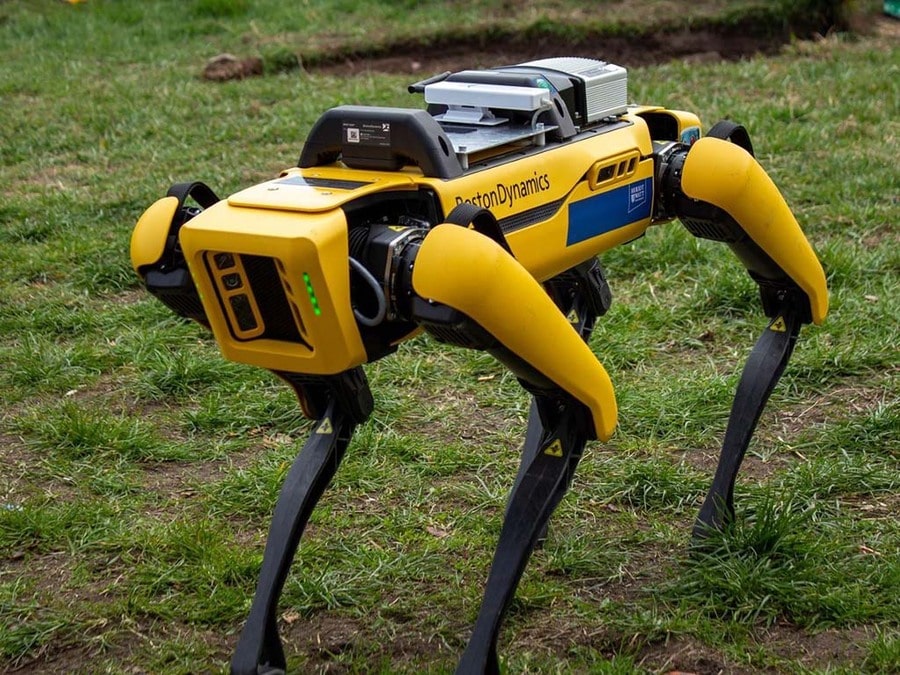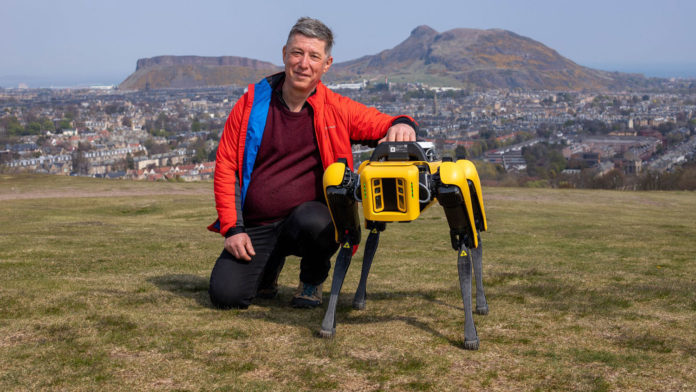Boston Dynamics’ famous four-legged robot Spot will help save lives and cut carbon dioxide emissions by supporting hazardous environment research at the National Robotarium, based at Heriot-Watt University in Edinburgh. The experts will use new hardware to carry out research into how robots can support humans in hazardous environments like offshore energy inspection and disaster recovery.
The £60,000 robot is being fitted with ‘telexistence’ technology that will allow researchers to assess the effectiveness of robotic assistance in hazardous environments. The technology lets humans experience an environment without being there, using devices like microphones and cameras to relay sounds and videos.
“In search and rescue operations or following accidents, Spot robots fitted with our sensors could monitor a casualty’s vital signs and transmit images and sounds back to a hospital, allowing doctors to offer advice on treatment or decide when it’s safe to move a patient,” said Professor Yvan Petillot, professor of robotics and autonomous systems at Heriot-Watt University and co-academic lead of the National Robotarium, in a statement.

“Robots of this design can climb over rubble, walk up and downstairs, and cope with hazards like dust and rain. These features will prove very useful as we develop more ways to ensure robots can help keep people safe and save companies money.”
The experts will first look into how the new robot can support the construction industry. “We are going to fit lidar to our robot, which is similar to radar but uses light instead of radio waves,” added professor Dr. Sen Wang. “That will allow the robot to build up a picture of its surroundings while spotting obstacles like rubble on construction sites.“
The team has set the robot up to be a moving data collector and data center, equipped with advanced telepresence solutions. On the construction sites, it will collect and measure in real-time, relaying the data to multiple experts at once, all around the world. According to the National Robotarium experts, using Spot in this way has the potential to speed up the construction process, reduce costs of re-work, detect hazards, increase efficiency and improve quality control.
